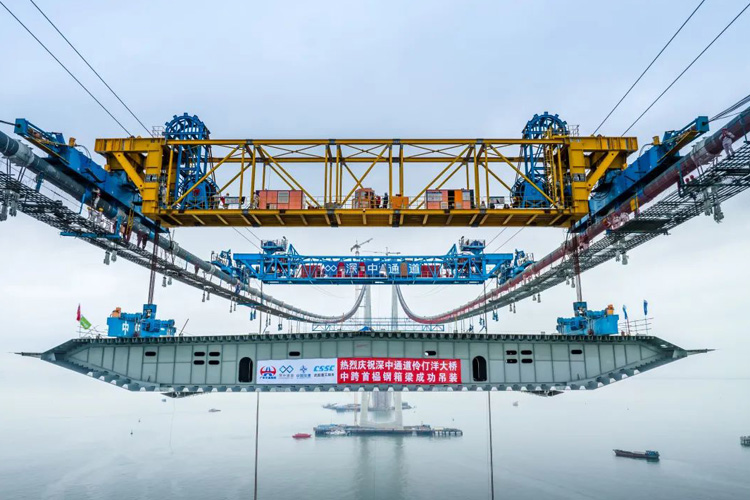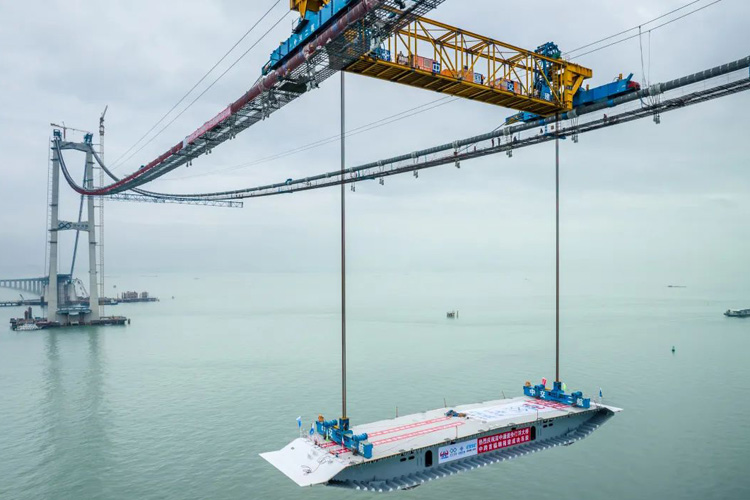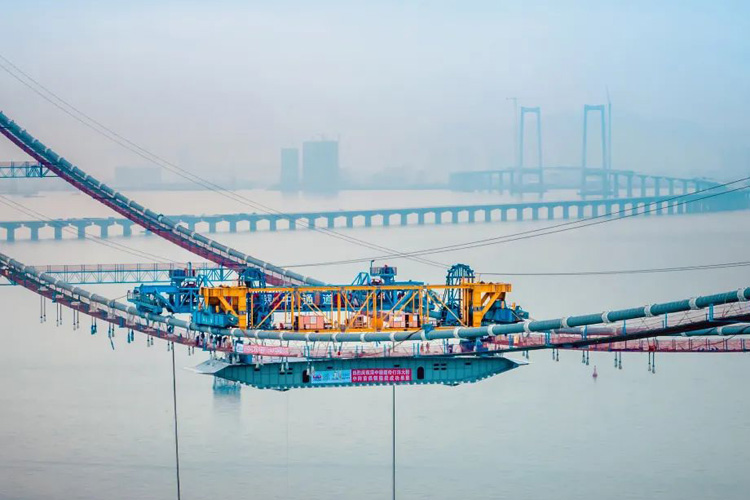On January 12, the first steel box girder of the world's highest sea bridge, the Lingdingyang Bridge of the Shenzhen-Zhongshan Link, which was built by the CCCC's Second Harbor Engineering, was successfully installed, marking a new stage of superstructure installation for the bridge construction.
The Shenzhen-Zhongshan Link connects Shenzhen on the east coast of the Pearl River Estuary and Zhongshan on the west coast. It is an important hub in the Guangdong-Hong Kong-Macao Greater Bay Area, with a total length of about 24 kilometers. It is a cross-sea project consisting of bridge, island, tunnel and underwater interchange. The Lingdingyang Bridge is one of the key projects of the Shenzhen-Zhongshan Link, and its main span length is 1,666 meters and the height of the main tower is 270 meters.
The bridge has 213 steel box girders, and the structure uses about 100,000 tons of steel, equivalent to the total weight of 14 Eiffel Towers. The first steel box girder was 11.2 meters long, 49.7 meters wide and weighed about 226 tons, with a lifting height (from the bridge deck to the sea) of 91 meters.
Lifting the steel box girder to 91 meters above the sea is equivalent to lifting 100 cars to a height of 30 floors in one breath. To ensure the smooth lifting, the project team made several rehearsals for the whole lifting process. A distributed control system was also developed to realize visualized remote control, construction monitoring, warning and intelligent deflection correction during the lifting process, effectively improving the safety and efficiency of offshore construction.
The Shenzhen-Zhongshan Link will be opened to traffic in 2024. By then, the driving time from Shenzhen to Zhongshan will be reduced from 2 hours to 20 minutes, which will strongly promote the integration, transformation and upgrading of the economy and traffic in the Pearl River Delta.





